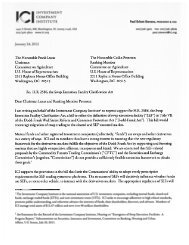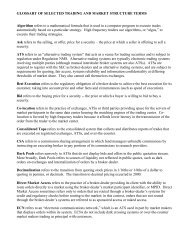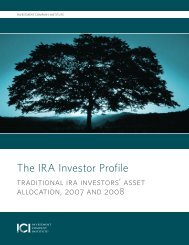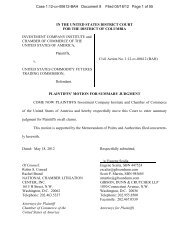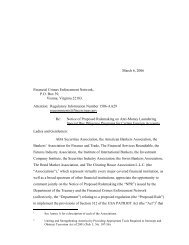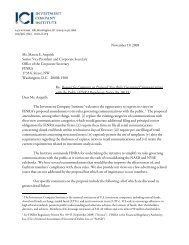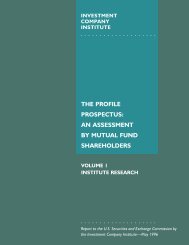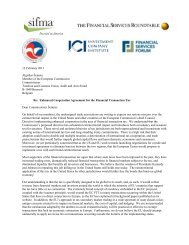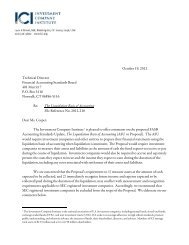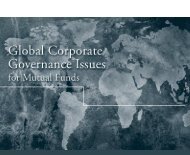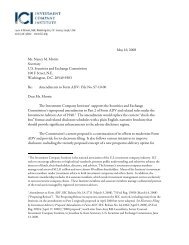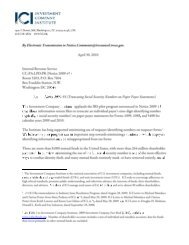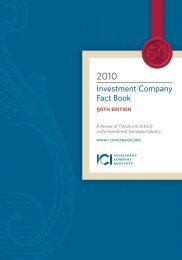Understanding Shareholders' Use of Information and Advisers (pdf)
Understanding Shareholders' Use of Information and Advisers (pdf)
Understanding Shareholders' Use of Information and Advisers (pdf)
- No tags were found...
Create successful ePaper yourself
Turn your PDF publications into a flip-book with our unique Google optimized e-Paper software.
Respondents Who Do Not Consultan AdviserRespondents who had never consulted a pr<strong>of</strong>essionalfinancial adviser when making investment decisions represented41 percent <strong>of</strong> all survey participants. The typicalrespondent who had not consulted a pr<strong>of</strong>essional financialadviser was 42 years old at the time <strong>of</strong> the survey, had householdincome <strong>of</strong> $55,000 <strong>and</strong> household financial assets <strong>of</strong>$63,000, the excluding primary residence <strong>and</strong> holdings inemployer-sponsored retirement plans. Almost two thirds <strong>of</strong>respondents who had never used an adviser were male <strong>and</strong>30 percent had a graduate degree. The majority <strong>of</strong> respondentswithout a pr<strong>of</strong>essional financial adviser said they enjoyinvesting <strong>and</strong> generally spend three hours per monthon financial matters (Figure 9).Respondents who had not consulted an adviser typicallyhad 46 percent <strong>of</strong> their household financial assets, or $29,000,invested in mutual funds at the time <strong>of</strong> the survey. Respondentswho had never used an adviser tended to be experiencedfund investors. The median length <strong>of</strong> fund ownership forthese shareholders was six years, <strong>and</strong> the median number <strong>of</strong>funds owned by this group was six. Altogether, 91 percent<strong>of</strong> respondents who had never consulted an adviser ownedstock funds at the time <strong>of</strong> the survey, 46 percent owned bondfunds, <strong>and</strong> 47 percent owned money market funds(Figure 10).CHARACTERISTICS OF THESHAREHOLDER/ADVISER RELATIONSHIPThe nature <strong>of</strong> the shareholder/adviser relationship differs bytype <strong>of</strong> primary pr<strong>of</strong>essional financial adviser. The vast majority<strong>of</strong> respondents who indicated either a full-service broker,financial planner, or insurance agent as their primary pr<strong>of</strong>essionalfinancial adviser described the relationship as a collaborativeeffort. Among respondents listing a bank representativeas their primary pr<strong>of</strong>essional financial adviser, 50 percentreported that they effectively delegate all fund purchase decisionsto the bank representative, 42 percent described theFIGURE 11Nature <strong>of</strong> Relationship with Primary Pr<strong>of</strong>essional Financial Adviser(percent <strong>of</strong> respondents who had consulted a pr<strong>of</strong>essional financial adviser)All RespondentsPrimary Pr<strong>of</strong>essional Financial AdviserWho Had Consulteda Pr<strong>of</strong>essional Full-service Financial Bank InsuranceFinancial Adviser Broker Planner Representative AgentPr<strong>of</strong>essional financial adviser....Selects all mutual fund 13 8 18 50* 6investmentsRecommends several funds 74 80 77 42* 93<strong>and</strong> shareholder selects onein which to investPlaces purchase orders for 13 12 5 8 1funds selected solely bythe shareholderNumber <strong>of</strong> respondents 564 230 188 14 1 30 11Small sample size.* Respondents who use a bank representative as their primary financial adviser are statistically different from those using a full-service broker,financial planner, or insurance agent at the 95 percent confidence level.14



